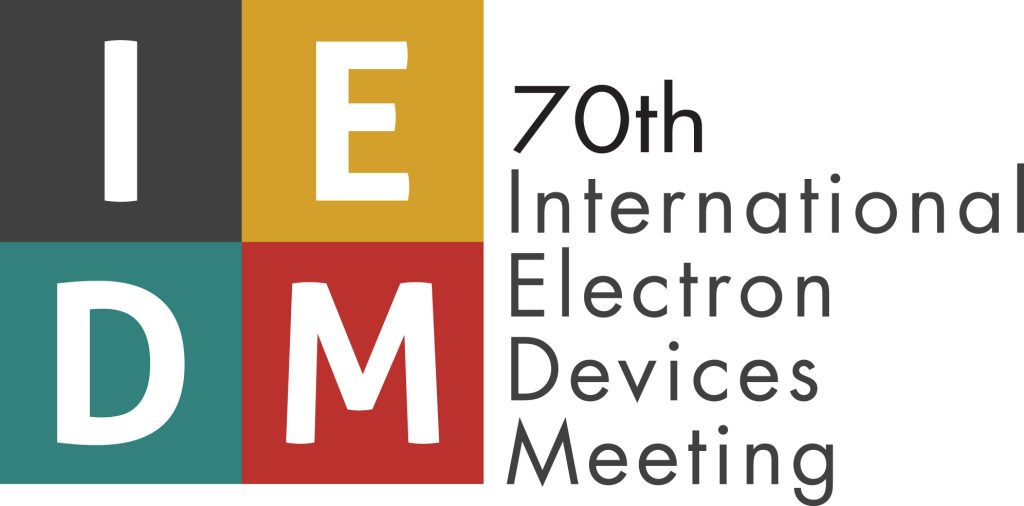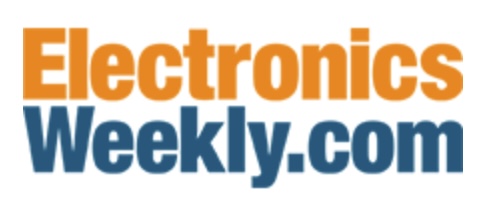2024 IEEE IEDM Call for Papers
The Annual IEEE International Electron Devices Meeting will be held at the Hilton San Francisco Union Square in San Francisco, CA, from December 7-11, 2024.
Key Dates
-
Submission Deadline: Thursday, July 11, 2024 23:59 PDT
-
Late News Submission Deadline: August 19, 2024 23:59 PDT
The paper submission deadline is July 11 for submission of four-page, camera-ready papers to provide faster dissemination of the conference’s cutting-edge results. Accepted papers will be published as-is in the proceedings.
Submit Paper Focused Call for Papers Main Call for Papers

ADVANCED LOGIC TECHNOLOGY (ALT)
Typical Themes
-
CMOS platform technologies & opportunities
-
Logic device performance and circuit design challenges
-
Advanced, novel process integration schemes and (applications-driven) scaling approaches
-
Process module innovations and progresses in process control & process metrology
-
Device technology co-optimization (DTCO), System technology co-optimization (STCO)
New or Trending Areas
-
GAA (vertically stacked) nanosheets based devices and circuits; new channel materials
-
Sequential, monolithic 3D integration, heterogenous chiplets, 2.5/3D integration, thermal management
-
Logic for memory
-
Interconnects (BEOL, Backside power delivery)
-
BEOL compatible transistors
EMERGING DEVICE and COMPUTE TECHNOLOGY (EDT)
Typical Themes
-
2D and devices on low-dimensional materials
-
Non-CMOS emerging devices
-
Neuromorphic and approximate computing devices
-
Spintronic and magnetic devices
-
Steep-slope devices
-
Quantum computing devices
New or Trending Areas
-
Topological materials and devices, and phase transitions transistors
-
Emerging state machines, time dynamical systems, approximate computing
-
Novel cryogenic devices
MEMORY TECHNOLOGY (MT)
Typical Themes
-
Conventional memories
-
Emerging memories
-
3D memory technologies
-
Memories for AI and near-memory computing applications
-
In-Package memory for PPA augmentation
New or Trending Areas
-
Memories to break the memory wall
-
Memory-enabled artificial intelligence applications
-
Memory-logic 3D stacking
-
System-technology co-optimization
-
Memory pooling and communication
-
New memory hierarchy
MODELING AND SIMULATION (MS)
Typical Themes
-
Technology CAD and benchmarking
-
Advanced logic and memory device modeling
-
Atomistic material, process, and interconnect simulation
-
Compact models for DTCO
-
Alternative computing device modeling
-
Nanoscale (bio) sensors modeling
Typical Themes
-
SRAM, DRAM, Flash, ReRAM, MRAM, PCRAM, ferroelectric memory, and memory selector for analog in-memory deep learning
-
Memory, logic, and nanoelectronic devices with novel functions and/or materials for new and unconventional compute paradigms
-
Probabilistic and approximate computing enabled by stochastic behaviors of devices and materials
-
Emerging computing algorithms enabled by memory, logic, and nanoelectronic devices
New or Trending Areas
-
Multi-scale simulation with hybrid techniques
-
Advanced packaging and 3D integration modeling
-
Thermal modeling
-
Low-temperature and quantum device modeling
-
Device modeling for photonics
-
Device modeling for in-memory and in-sensor computing
NEUROMORPHIC and NOVEL COMPUTING (NC)
New or Trending Areas
-
Device-algorithm co-optimization
-
Monolithic 3D integration for neuromorphic computing
-
Neuromorphic sensors and in-sensor computing
OPTOELECTRONICS, DISPLAYS, and IMAGING SYSTEMS (ODI)
Typical Themes
-
Heterogeneous optoelectronic integration including sources, modulators or detectors
-
Neuromorphic photonics
-
Single photon emitters and detectors
-
Luminescent devices based on new materials including perovskites and quantum dots
-
Displays and imagers for augmented or virtual reality
-
Holographic devices and displays
-
Displays with unconventional form or size
-
Photodetectors and imagers with new materials or flexible platform and printed electronics
-
Imagers with unconventional spectral bandwidth, high sensitivity, or high time-resolution
-
Image sensors with pixels for range sensing, TOF, RGBZ, LIDAR
New or Trending Areas
-
Photonic devices for quantum computation and sensing
-
Intelligent Image sensors
-
Advanced on-chip optics for imagers
-
In-display and under-display sensors
POWER, MILLIMETER WAVE AND ANALOG TECHNOLOGY (PMA)
Typical Themes
-
Power and/or high speed (microwave to THz devices) devices, modules, and systems
-
Manufacturing processes, device design, modeling, physics, and reliability of power and/or high-speed devices
-
Fundamental studies on doping, traps, interface states, and device reliability for power and/or high-speed switching devices
-
Micro and mm-wave devices, such as PAs, LNAs, switches and mixers.
-
Energy harvesting devices and circuits
-
Tunable passives, SAW/BAW devices, antenna arrays
New or Trending Areas
- Wide bandgap and ultra-wide bandgap semiconductors such as SiC, (Al)GaN, diamond, β-Ga2O3, BN
- Power devices for applications for automotive and aviation to smart grid
- Device and circuits for 5G and 6G
- Antenna arrays and beam forming
- Extreme environment power and high-speed devices
- kt2 of ScxAl1−xN piezoelectric material: LNO, LTO, AIN(Sc)…
RELIABILITY OF SYSTEMS and DEVICES (RSD)
Typical Themes
-
Component level of FEOL/MEOL/BEOL reliability model
-
Robustness and security of electronic circuits and systems
-
Reliability of conventional and emerging memories
-
Circuits, systems-level reliability, and aging
-
Thermal and PID/charging management in existing and novel process integration
-
Reliability of RF/mm-wave/5G in high-frequency
applications
-
Reliability of devices, circuits, and systems for more-than-Moore applications, automotive, aerospace and bio-applications (BioFETs, DNA detection, etc.)
-
Reliability of cryogenic devices for future quantum
computing applications
New or Trending Areas
-
Reliability of new materials and/or new architectures for transistors
-
Reliability of advanced 2.5D/3D IC advanced package
-
Design for testing (DFT) / Design for reliability (DFR) solutions for improved reliability
SENSORS, MEMS, and BIOELECTRONICS (SMB)
Typical Themes
-
Physical and biochemical integrated sensors
-
Energy harvesting and storage devices
-
Flexible devices for wearable applications
-
MEMS for Internet of Things
-
Bio-electronic interfaces and implantable devices
New or Trending Areas
-
Intelligent sensors with embedded AI
-
Multimodal biochemical and physical sensors for healthcare
-
Sensors and devices for human-machine interface
-
Hybrid organic/inorganic microfabrication and device
